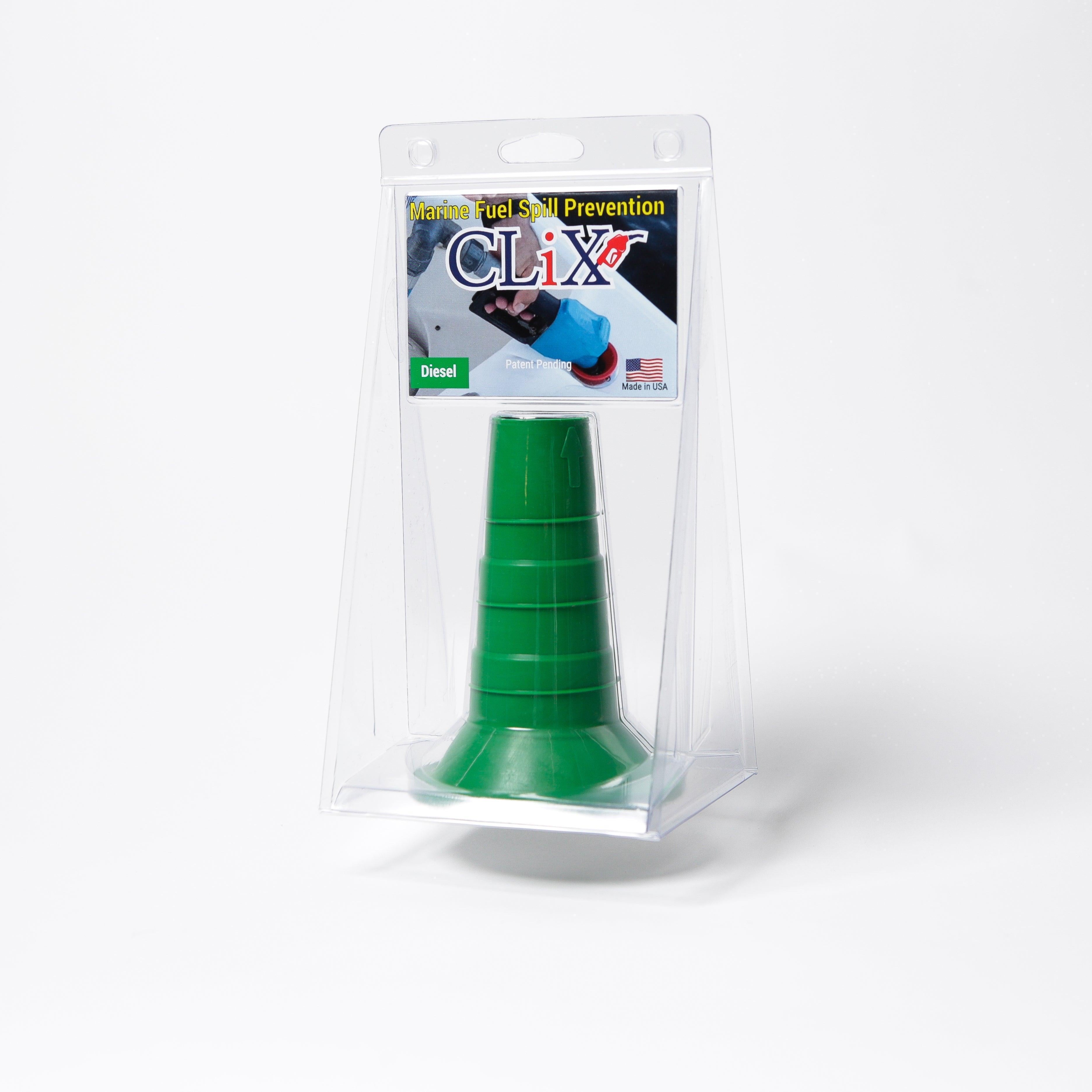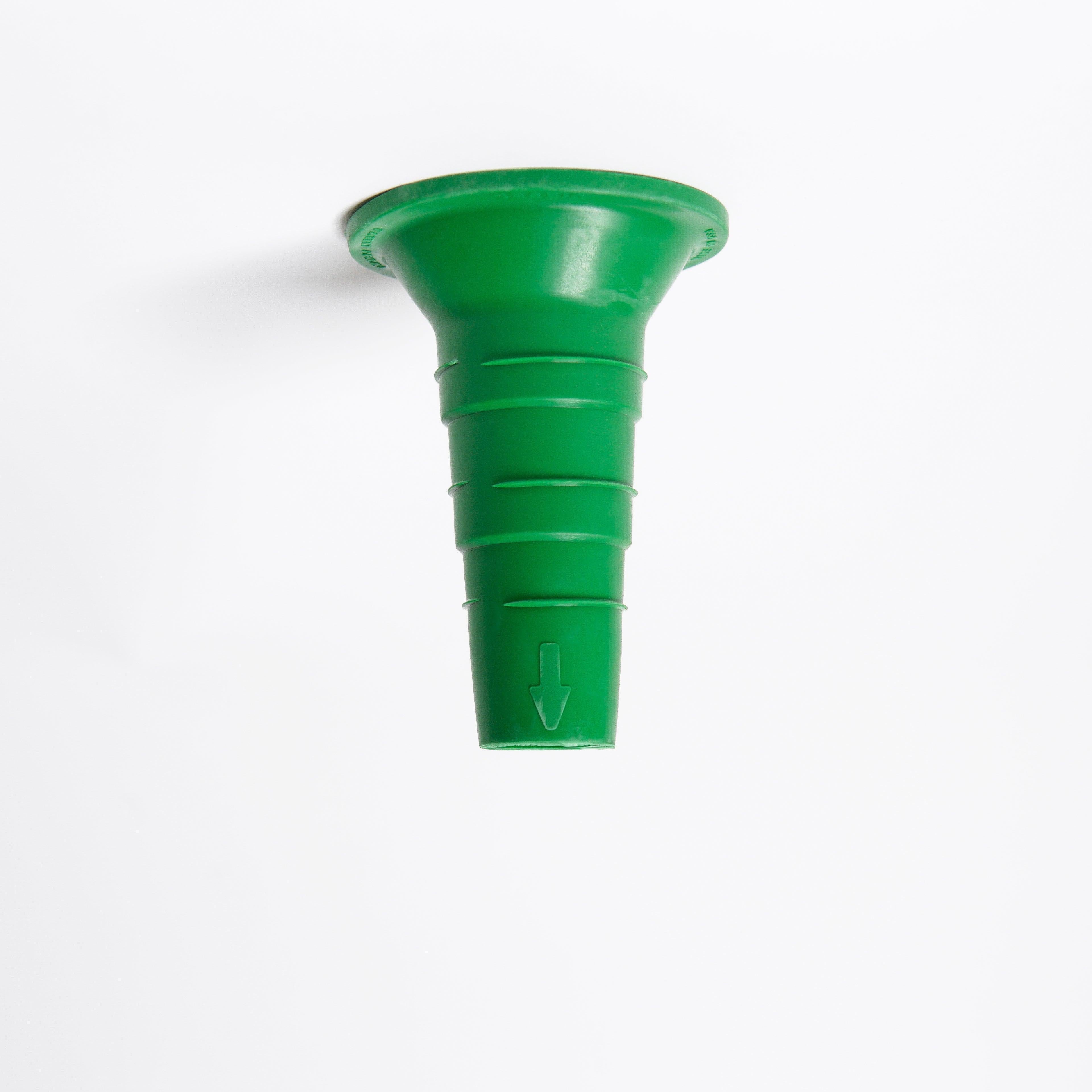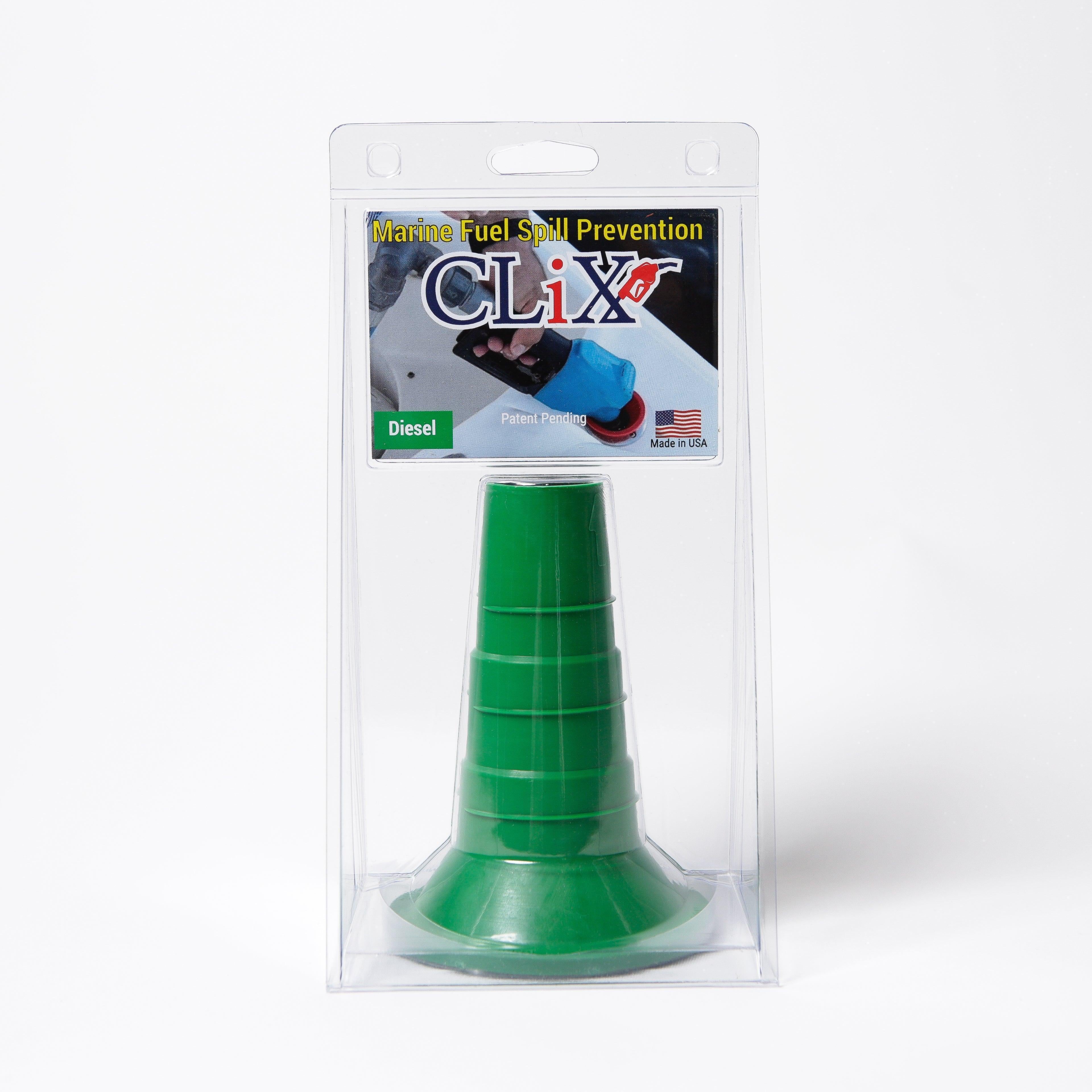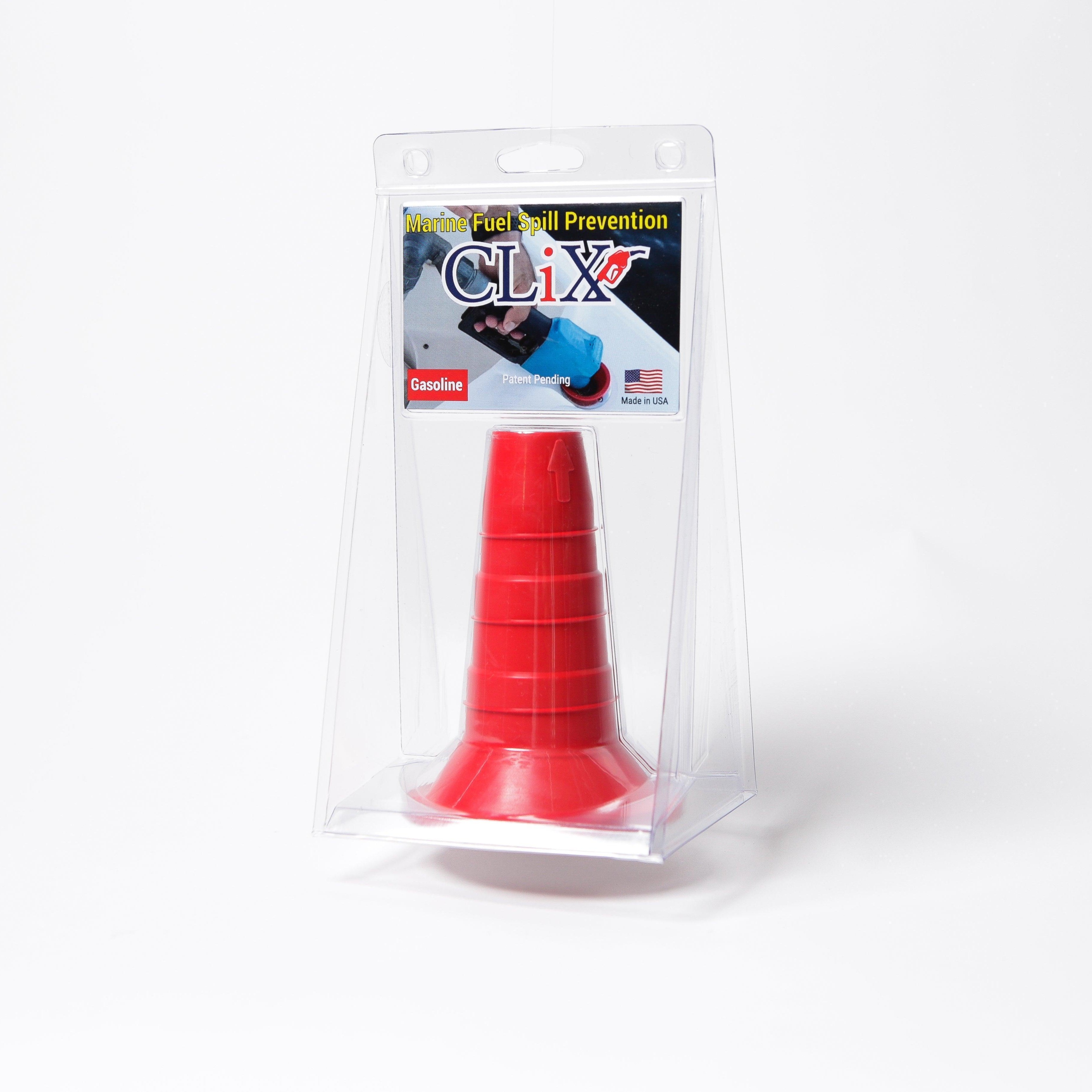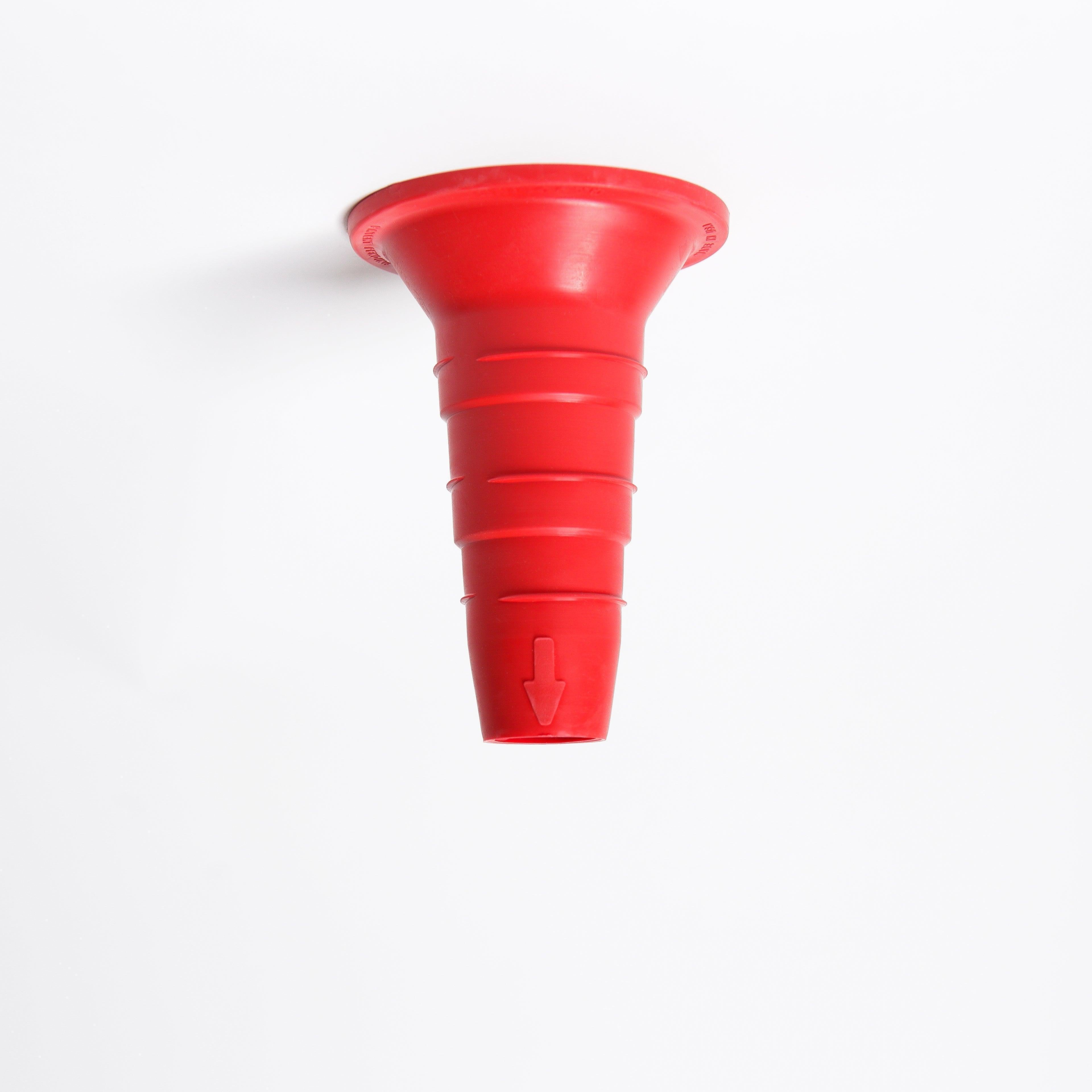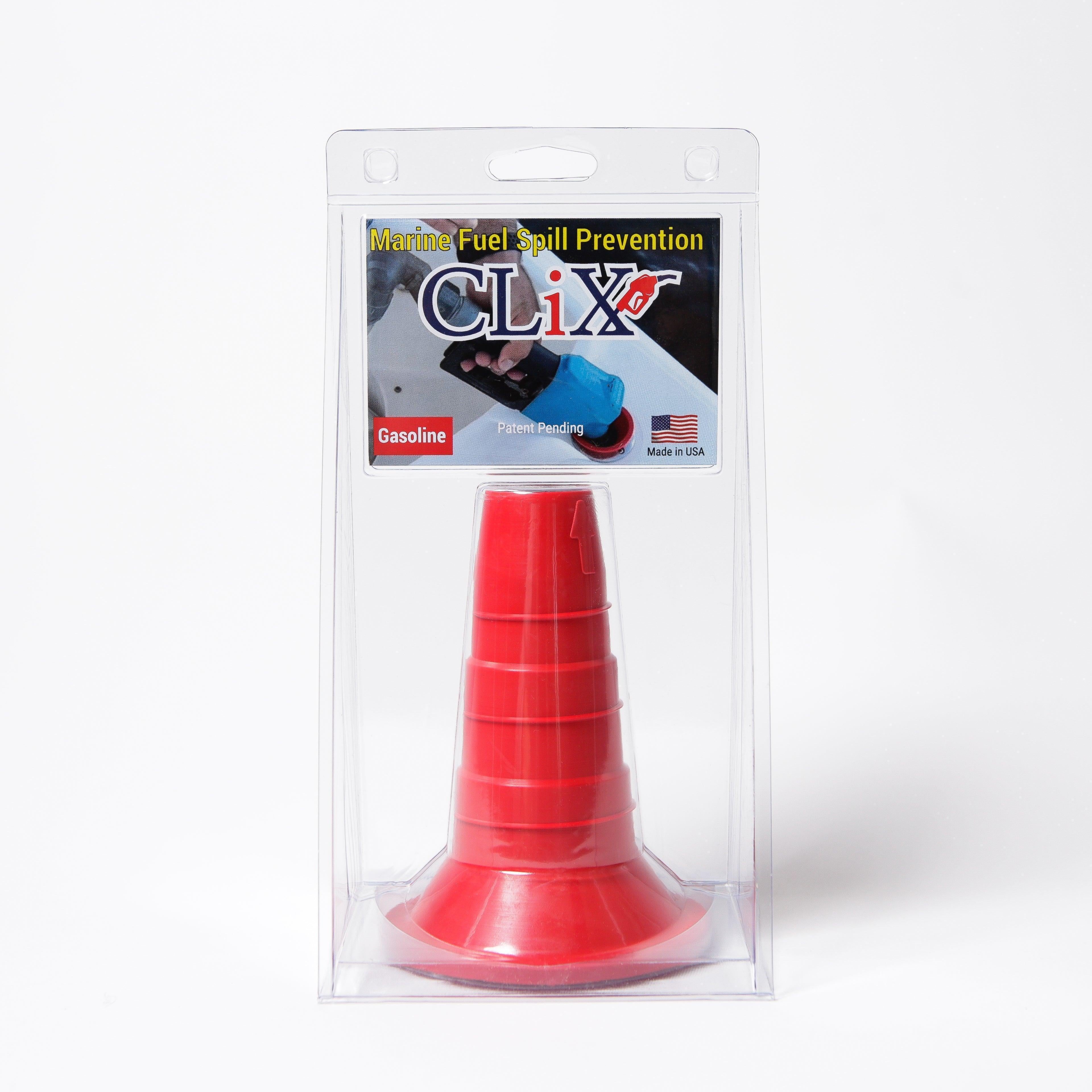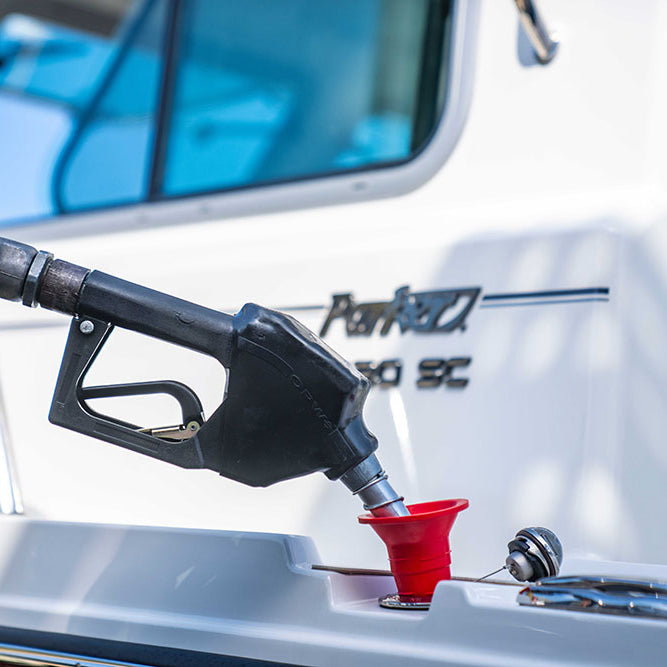Setting Sail Safely: Your Guide to Essential Boating Equipment
Boating safety isn't just a regulation; it's a responsibility. This guide provides a quick list of eight essential tools and devices to keep you, your passengers, and our waterways safe. From fueling solutions to communication devices, these items address crucial safety needs and help prevent accidents. This checklist will help ensure you're properly equipped for any on-the-water situation.
1. CLiX Fueling Solutions
Tired of the anxiety of overfilling your boat's fuel tank? Worried about the environmental impact of spills? CLiX Fueling Solutions offers a smart, automated approach to fueling that eliminates these concerns. This innovative system prevents spills and overfills by automatically shutting off the fuel nozzle when your tank is full. This not only protects your vessel from fuel damage but also safeguards the surrounding marine environment. Whether you're a weekend warrior or a seasoned captain, CLiX provides peace of mind and simplifies the fueling process.
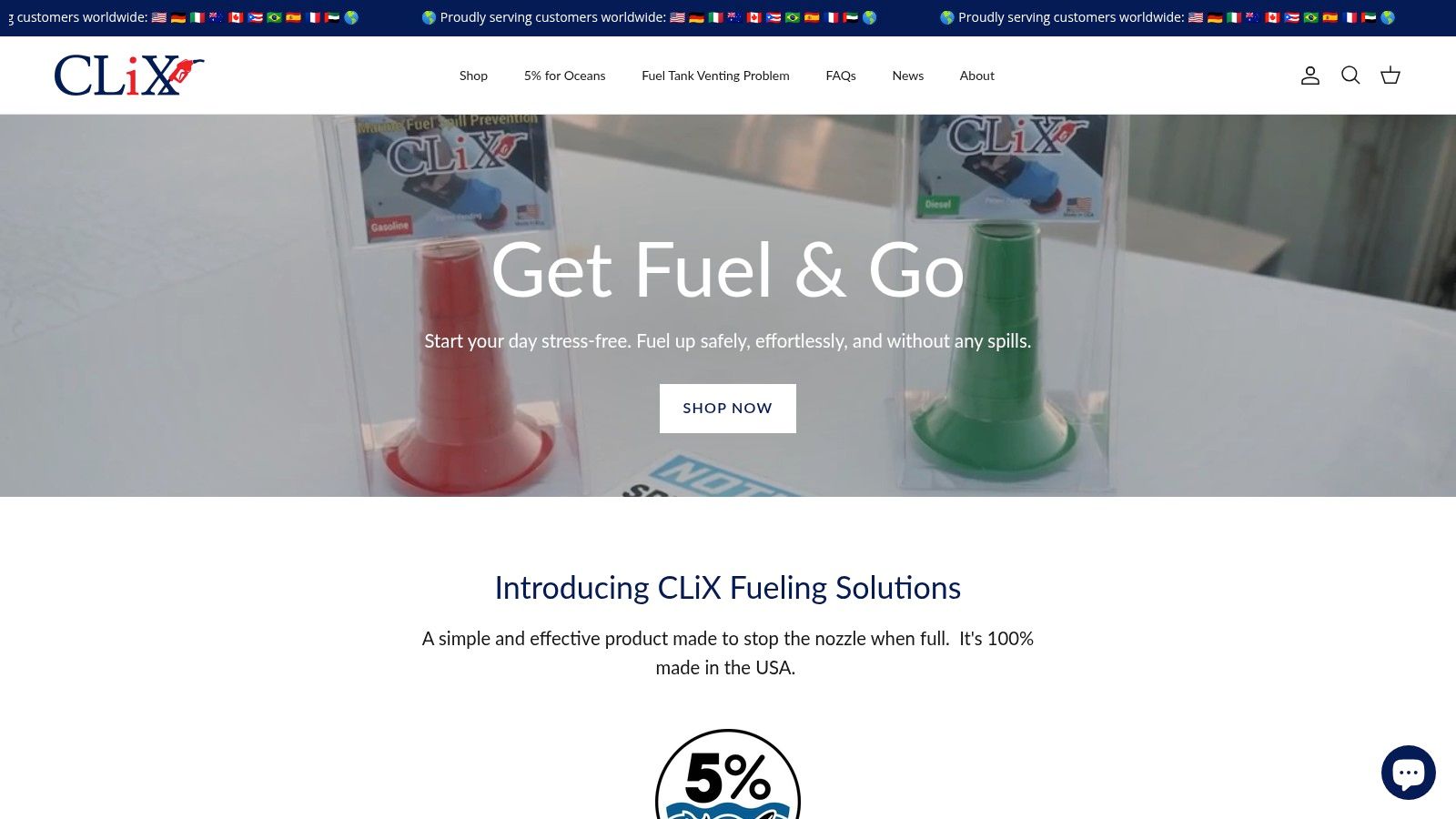
CLiX Fueling Solutions deserves a spot on this list because it directly addresses two critical aspects of boating safety: preventing fuel spills and protecting the environment. The automatic shutoff feature eliminates the risk of human error during fueling, a common cause of spills. This is particularly beneficial in challenging conditions like rough water or low light. By preventing overfills, CLiX protects your boat's engine and other components from fuel damage, saving you on costly repairs. The system's focus on spill prevention also minimizes the negative impact of fuel on marine ecosystems.
CLiX offers both diesel and gasoline models, catering to a wide range of boat types. The system is proudly made in the USA, emphasizing quality and reliability. Testimonials from experienced captains and recreational boaters further reinforce its effectiveness. While pricing isn't readily available on the website, the long-term benefits of preventing spills and protecting your boat likely outweigh the initial investment. Information regarding compatibility with various fueling systems is also limited, and contacting CLiX directly for specific requirements is recommended.
Pros:
- Automatically halts fueling to prevent overfill and spills.
- Protects both your boat and marine ecosystems from fuel damage.
- Available in both diesel and gas models for versatile use.
- Made in the USA with proven reliability backed by testimonials.
Cons:
- Pricing details are not specified.
- The solution’s compatibility with non-standard fueling systems isn’t detailed.
Implementation/Setup Tips:
As detailed compatibility information isn't publicly available, it's crucial to contact CLiX directly (https://clixfueling.com) before purchasing. Discuss your boat's fuel system specifications with them to ensure compatibility and get guidance on installation procedures.
While traditional manual fueling methods rely on vigilance and timing, CLiX offers a proactive solution that minimizes risk. For marina operators, this technology can significantly reduce the risk of spills and the associated environmental cleanup costs. For individual boat owners, it offers peace of mind and simplifies the fueling process. For environmental advocates, it represents a significant step towards protecting our waterways. CLiX Fueling Solutions ultimately elevates boating safety and promotes responsible boating practices.
2. USCG-Approved Personal Flotation Devices (PFDs)
Personal Flotation Devices (PFDs), often called life jackets, are non-negotiable for boating safety and are legally required by the U.S. Coast Guard. Having enough properly sized, USCG-approved PFDs for every person on board isn't just a box to check; it's the single most important piece of equipment that could save lives in an emergency. A PFD’s fundamental purpose is to keep you afloat, allowing you to breathe even if unconscious, and increasing your visibility to rescuers.
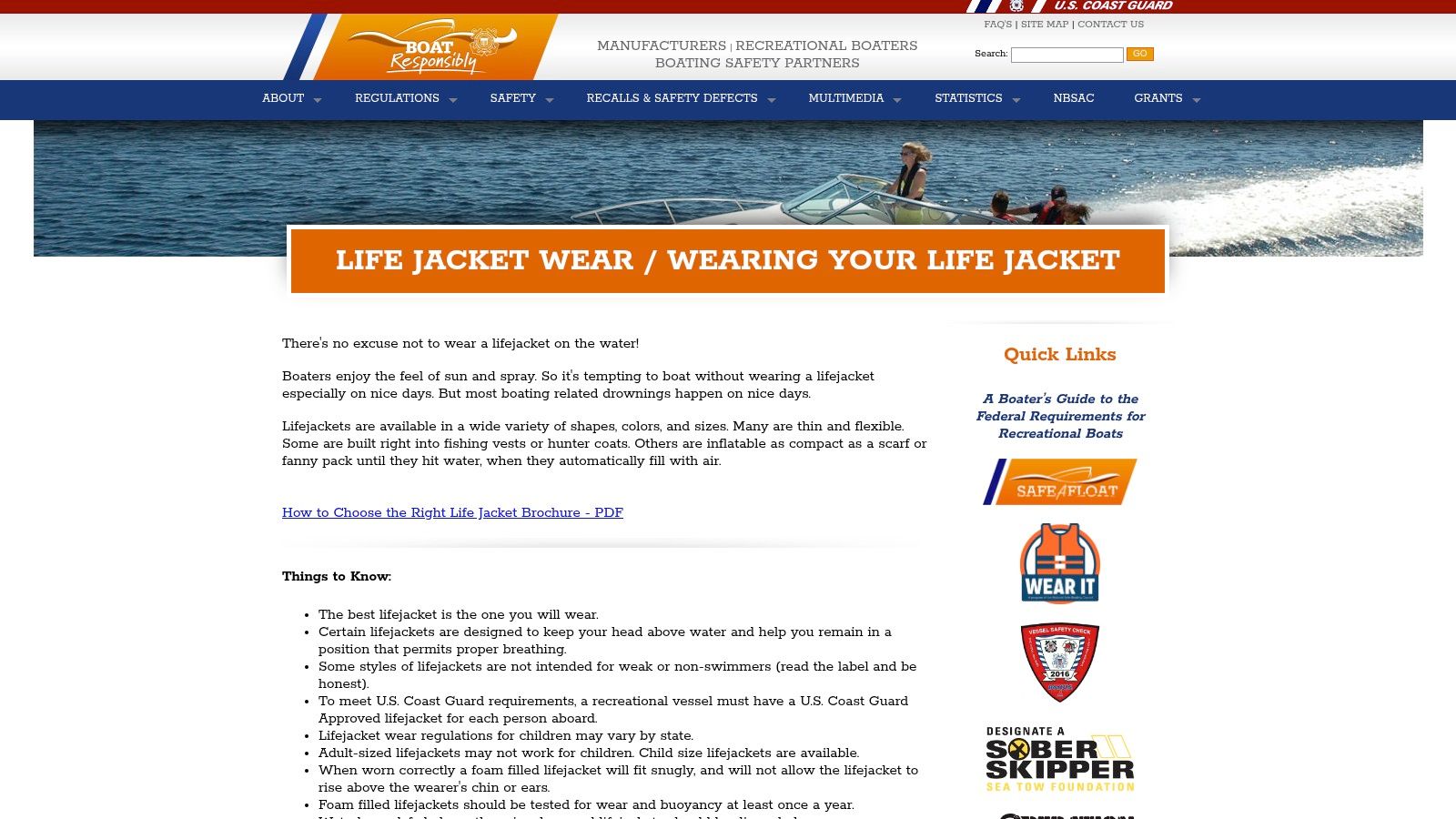
PFDs are categorized into Types I-V, each designed for specific activities and conditions. Type I (offshore life jackets) provide the most buoyancy and are best for open water where rescue may be delayed. Type II (near-shore buoyant vests) are suitable for calmer waters where faster rescue is likely. Type III (flotation aids) are designed for calm, inland waters where there's a good chance of quick rescue and offer greater freedom of movement for activities like paddling or fishing. Type IV (throwable devices) are cushions or rings intended to be thrown to a person in the water and are not meant to be worn. Type V (special use devices) cater to specific activities like whitewater kayaking or sailing, and some, like inflatable PFDs, must be worn to be counted towards the legal carriage requirement. Choosing the right type is crucial for maximizing effectiveness and comfort.
For recreational boaters, Type II or III PFDs are often sufficient. Children require specifically sized and fitted PFDs, and infants and small children should wear Type I or II PFDs with a head support collar. Pricing varies depending on the type and features, ranging from around $20 for basic Type II or III models to over $100 for specialized or inflatable Type V PFDs.
Implementation/Setup Tips:
- Proper Fit is Crucial: A PFD that's too large can easily slip over the head, while one that’s too small won’t provide adequate flotation. Make sure everyone tries on their PFD before heading out on the water and adjust the straps for a snug fit.
- Regular Inspection: Check your PFDs for rips, tears, or damage to straps and buckles. Inflatable PFDs require regular maintenance, including checking the inflation mechanism and replacing expired CO2 cartridges.
- Storage: Store PFDs in a cool, dry place away from direct sunlight and harsh chemicals. Don't store inflatable PFDs in a compressed state for extended periods.
- Practice: Encourage everyone on board to practice putting on their PFDs in a calm setting so they're familiar with the process in an emergency. Practice using inflatable PFDs to understand how the inflation mechanism works.
Pros:
- Lifesaving: The primary benefit is clear: PFDs prevent drowning.
- Increased Visibility: Bright colors and reflective materials aid in spotting people in the water.
- Variety: Options are available for all sizes, ages, and boating activities.
- Comfort: Modern designs are more comfortable and less bulky than older styles.
Cons:
- Cost: Quality PFDs can be an investment, especially inflatable models.
- Maintenance: Inflatable PFDs require regular inspection and maintenance.
- Comfort in Hot Weather: Some boaters find PFDs uncomfortable in high temperatures.
Learn more about PFDs and regulations from the U.S. Coast Guard
3. Marine Fire Extinguishers
Fire is a serious threat on the water. Being surrounded by flammable materials like fuel, fiberglass, and upholstery, combined with the often limited escape routes on a boat, makes having the right fire suppression tools critical. Coast Guard-approved marine fire extinguishers are not just recommended—they're required on nearly all motorized vessels. These extinguishers are specifically designed to handle the unique challenges of a marine environment and the types of fires likely to occur on a boat. Ignoring this requirement puts you, your passengers, and your vessel at significant risk.
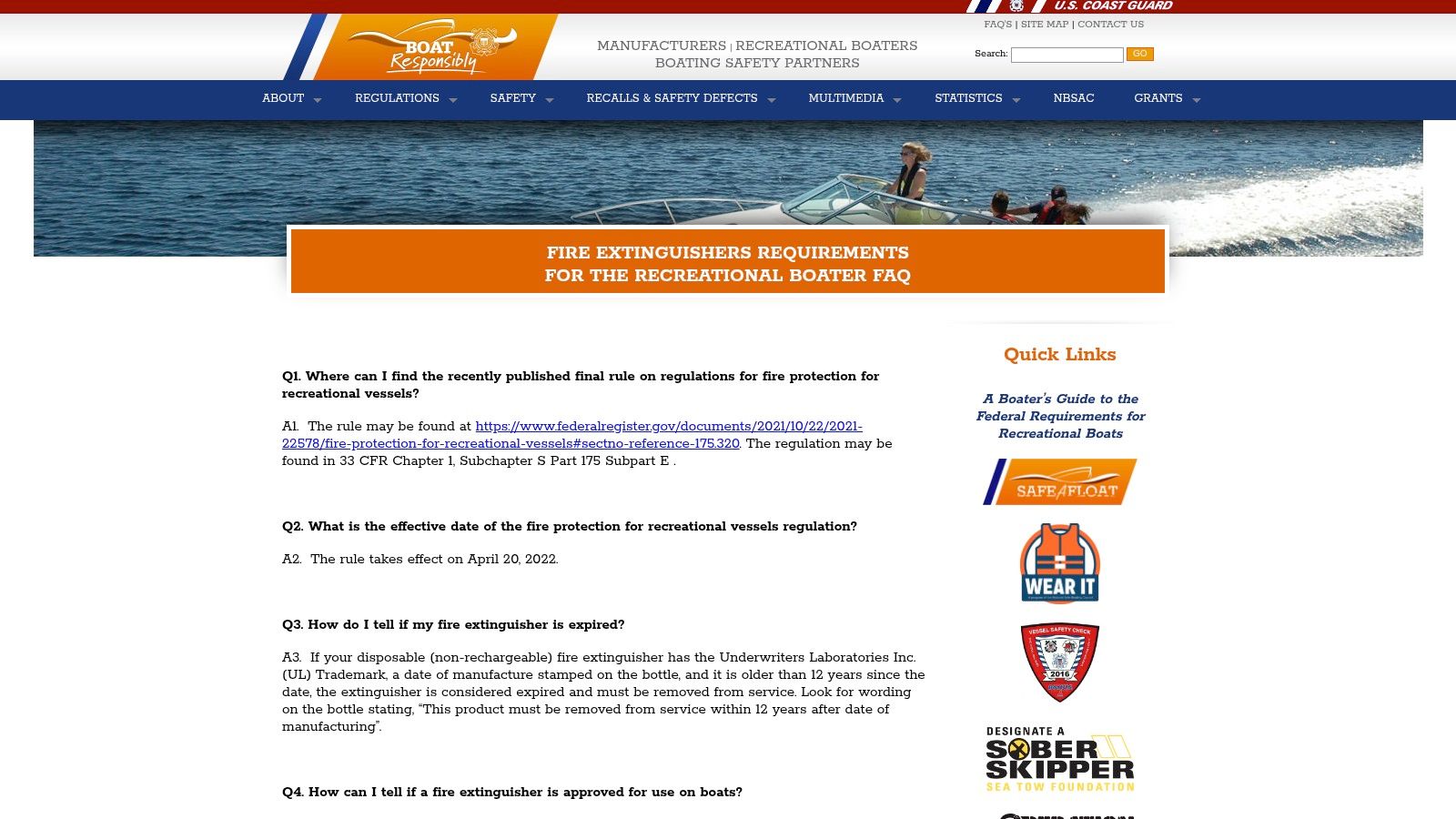
Unlike household fire extinguishers, marine fire extinguishers are built with corrosion-resistant materials to withstand the harsh saltwater environment. They are also designed to be compact for easy storage in tight spaces, a valuable feature on any boat. Most approved extinguishers will carry an ABC rating, meaning they can combat fires fueled by ordinary combustibles (wood, cloth, paper), flammable liquids (gasoline, oil), and energized electrical equipment. The Coast Guard approval and markings are essential for compliance, so always check for these when purchasing.
The required size and number of extinguishers depend on the size of your boat. Many recreational boats require at least one B-I type extinguisher, which is suitable for flammable liquids and has a specific extinguishing capacity. Larger vessels will require multiple extinguishers or larger types, potentially including Type B-II extinguishers for larger flammable liquid fires. You can find the specific requirements for your vessel size and type in the U.S. Coast Guard's boating regulations (available online at https://www.uscgboating.org/recreational-boaters/fire-extinguisher-faq.php). Pricing varies depending on the size and type, ranging from around $20 for smaller B-I extinguishers to over $100 for larger or specialized types.
Implementation/Setup Tips:
- Mounting: Mount extinguishers in readily accessible locations, clearly visible and not obstructed by gear. Common locations include the helm, galley, and engine compartment. Use approved mounting brackets.
- Inspection: Inspect your extinguishers monthly. Check the pressure gauge, look for signs of corrosion or damage, and ensure the safety pin is intact.
- Maintenance: Have your extinguishers professionally inspected and serviced annually or as recommended by the manufacturer. This often includes pressure testing and recharging.
- Training: Familiarize yourself and your passengers with the location and operation of the extinguishers. Knowing how to use them quickly and effectively in an emergency is crucial.
Pros:
- Essential for combating unexpected fires, minimizing potential damage and risk to life
- Portable and can be quickly deployed in emergencies
- Specifically designed for marine-specific fire hazards and the corrosive marine environment
- Relatively long shelf life with proper maintenance
Cons:
- Requires regular inspection and maintenance to ensure proper function
- Limited discharge time (typically 8-12 seconds), requiring efficient use
- Must be replaced or recharged after use, adding to the overall cost
- Can be damaged by exposure to harsh marine environments if not properly stored and maintained
Having the correct marine fire extinguishers onboard is not just about meeting regulatory requirements; it's about ensuring the safety of everyone on board and protecting your valuable investment. A small investment in the right equipment and regular maintenance can make a world of difference in an emergency situation.
4. Visual Distress Signals
Visual distress signals are absolutely crucial for boating safety, earning their spot as a required piece of equipment for boats in coastal waters, the Great Lakes, and territorial seas. These signals are your lifeline in an emergency, allowing you to alert other vessels and search and rescue teams to your location, especially in conditions with limited visibility. Imagine being stranded in dense fog or after sunset – visual distress signals could be the only way to get help.
There are several types of visual distress signals, each with its own advantages and disadvantages:
-
Pyrotechnic Signals: These include handheld flares, aerial flares, and smoke signals. They are highly visible and effective at attracting attention over long distances. However, they have expiration dates (typically 42 months), require careful handling and proper disposal, and can be dangerous if used improperly. Prices for a pyrotechnic kit can range from $30 to $150+ depending on the number and type of flares included.
-
Non-Pyrotechnic Signals: This category includes distress flags (orange flag with a black square and ball) and electric distress lights. These are a safer alternative to pyrotechnics and don’t expire. Electric distress lights offer excellent visibility at night, while flags are suitable for daytime use. Costs can range from $10 for a basic flag to $50+ for a SOLAS-approved electric distress light. Learn more about Visual Distress Signals and consider exploring higher-end options like SOLAS-approved signals which exceed the minimum USCG requirements, providing extra assurance in critical situations.
-
Digital Distress Signals: Relatively new to the market, digital distress signals utilize GPS and satellite technology to alert authorities and nearby vessels of your exact location. While they can be more expensive, they offer the advantage of continuous signaling and extended battery life.
Choosing the Right Signals: Most recreational boaters opt for a combination of pyrotechnic and non-pyrotechnic signals to cover both day and night emergencies. This approach provides redundancy and increases your chances of being seen. For extended trips or voyages further offshore, consider investing in SOLAS-approved devices. These meet international standards and often offer enhanced performance and durability. Many distress signal kits come in waterproof containers for safe and readily accessible storage.
Implementation and Setup Tips:
- Storage: Store your visual distress signals in a readily accessible location, protected from the elements. Ensure everyone on board knows where they are and how to use them.
- Check Expiration Dates: Regularly inspect your pyrotechnic signals and replace expired ones promptly. Proper disposal of expired flares is important – contact your local fire department or Coast Guard station for guidance.
- Practice: Familiarize yourself with the operation of all your distress signals before an emergency arises. Knowing how to use them quickly and correctly can be life-saving.
- Battery Check: For electronic distress lights, check the batteries regularly and replace them as needed. Consider carrying spare batteries as well.
Pros:
- Critical for signaling distress and increasing your chances of rescue.
- Variety of options available to suit different needs and budgets.
- Non-pyrotechnic options offer a safe and long-lasting alternative to flares.
Cons:
- Pyrotechnic signals require careful handling and proper disposal.
- Electronic signals are reliant on battery power.
For more in-depth information about visual distress signal requirements, visit the U.S. Coast Guard Boating Safety website: https://www.uscgboating.org/recreational-boaters/visual-distress-signals.php
5. Marine VHF Radio
While not legally required for all recreational boats, a marine VHF radio is a crucial piece of safety equipment that should be on every vessel venturing beyond close-to-shore waters. Unlike cell phones, which can lose service offshore, VHF radios provide a dependable communication link with the Coast Guard, other boats, and shore stations. This makes them invaluable in emergencies, allowing you to quickly call for help or relay critical information. Beyond emergencies, VHF radios are useful for receiving weather updates, navigational warnings, and communicating with nearby vessels for routine matters.
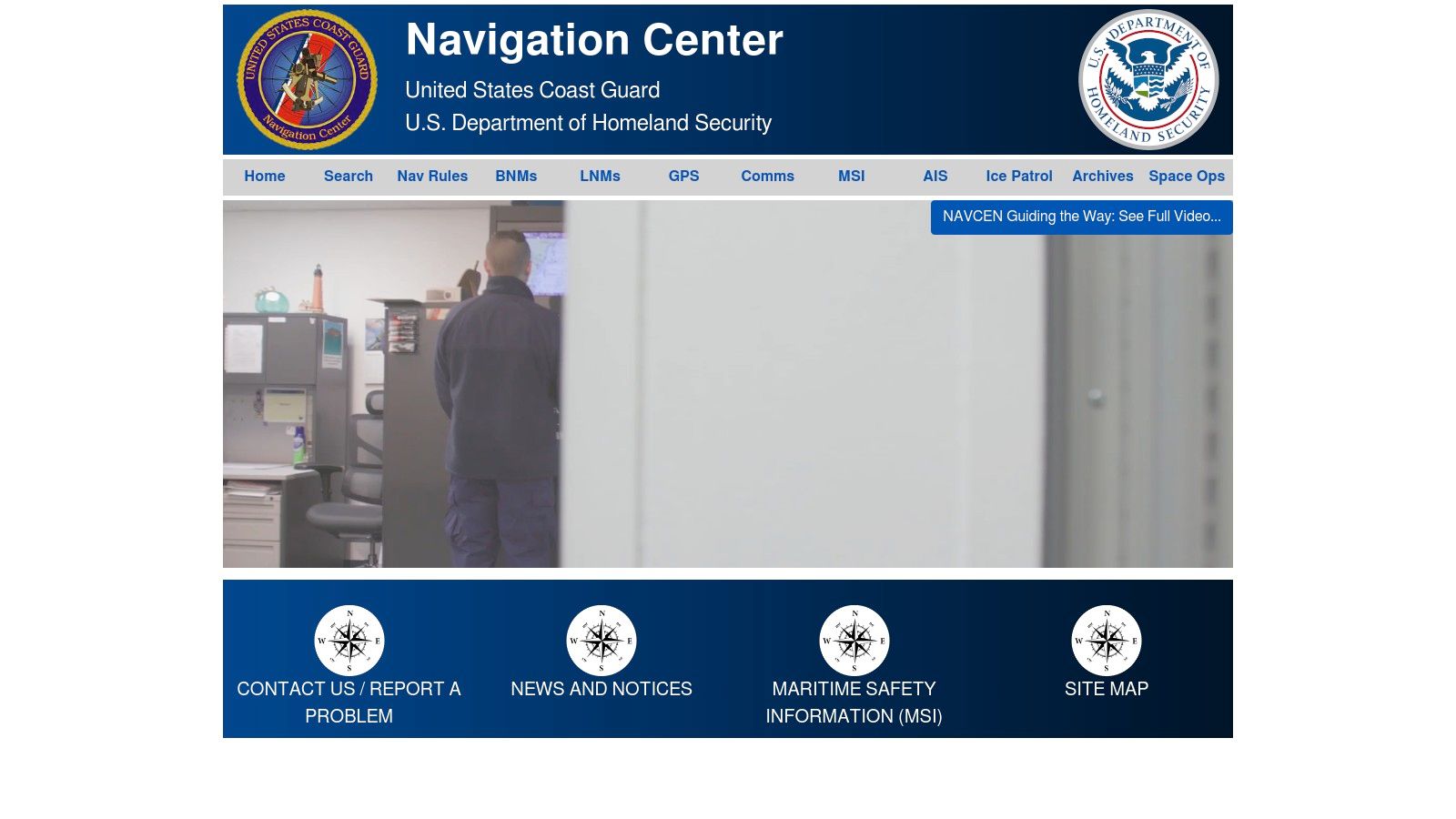
VHF radios operate on designated channels, the most important being Channel 16, the international distress, safety, and calling channel. Modern VHF radios feature Digital Selective Calling (DSC), which allows you to send a digital distress signal with your boat's location to the Coast Guard and other DSC-equipped vessels with the push of a button. Many models also include NOAA weather alert functionality, automatically alerting you to impending storms or hazardous conditions. Advanced units may even integrate GPS for precise position reporting. Pricing varies significantly, from around $100 for a basic handheld unit to upwards of $500 or more for a feature-rich fixed-mount system.
Choosing between a fixed-mount and a handheld radio depends on your boating style and budget. Fixed-mount units offer greater power and range due to their larger antennas and connection to the boat's power supply. Handhelds are more portable and serve as a backup if the primary system fails, but they have limited battery life and shorter range. Regardless of which type you choose, ensure it's waterproof and meets IPX7 or higher standards. Learn more about Marine VHF Radio.
Features:
- Dedicated emergency channel (Channel 16)
- Digital Selective Calling (DSC)
- NOAA weather alerts
- GPS integration (on some models)
- Waterproof construction
Pros:
- Reliable communication in offshore and remote areas
- Direct contact with rescue services
- Real-time weather updates and alerts
- Enhanced navigational safety
Cons:
- Limited range (dependent on antenna height)
- Requires knowledge of radio protocols
- Fixed-mount installation can be complex
- Handhelds have limited battery life
Before using your VHF radio, familiarize yourself with proper radio procedures and etiquette. Knowing how to make a distress call, use appropriate channels, and adhere to communication protocols is crucial for effective and responsible radio use. The U.S. Coast Guard provides resources and information on proper VHF radio operation (https://www.navcen.uscg.gov/?pageName=mtVhf). This investment in knowledge significantly enhances the safety benefits of having a VHF radio onboard and empowers you to be a more responsible boater.
6. Navigation Lights
Navigating after sunset or in conditions of limited visibility is a critical aspect of boating safety. Without proper lighting, your vessel becomes virtually invisible to others, significantly increasing the risk of a collision. Navigation lights are not just a good idea; they are legally required for all vessels operating between sunset and sunrise or during periods of reduced visibility, such as fog or heavy rain. These lights communicate your vessel's size, position, and direction of travel to other boaters, allowing them to anticipate your movements and avoid accidents. Understanding the specific requirements for your vessel is essential for safe and legal operation.
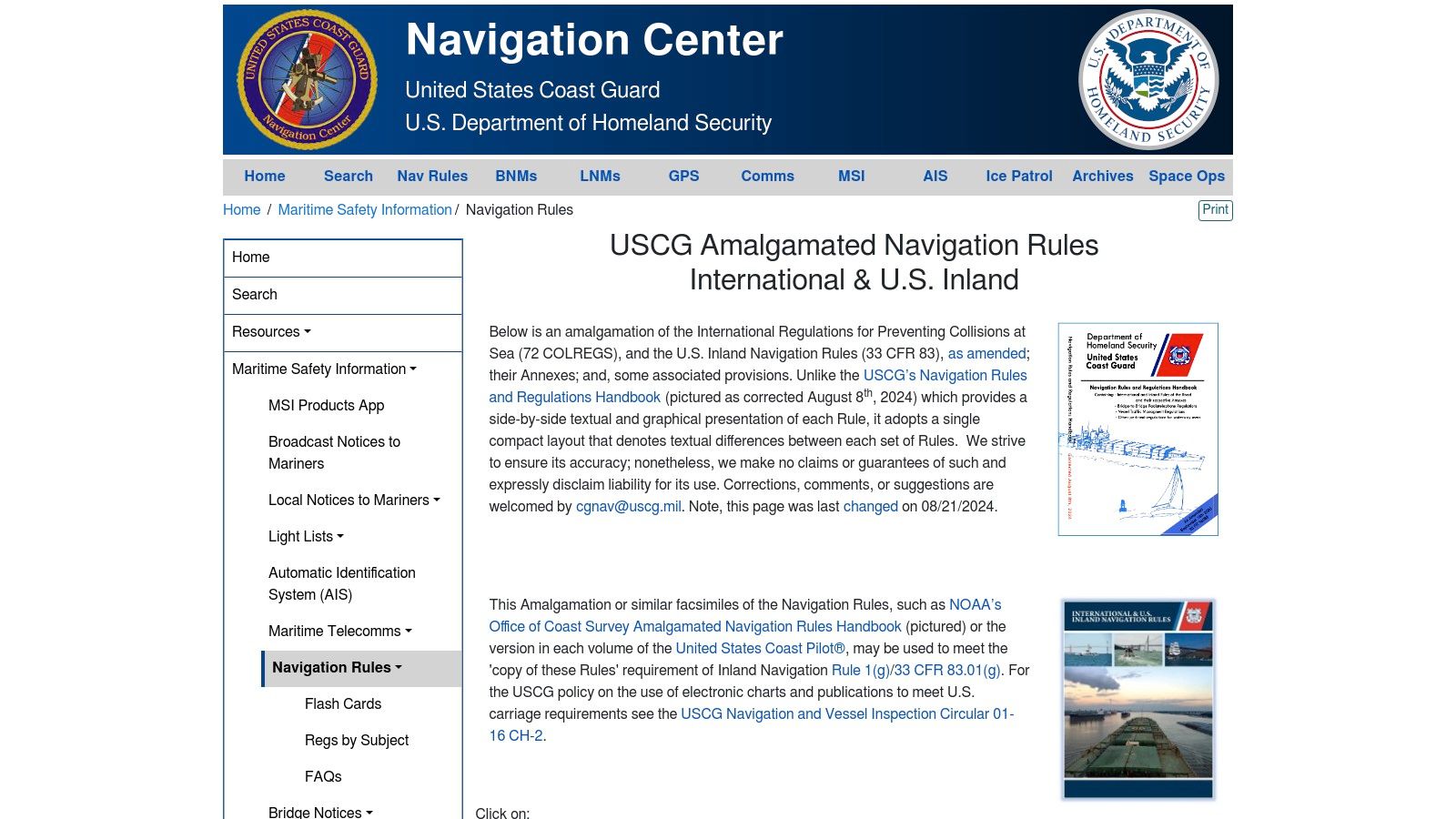
Most recreational boats will need a combination of three primary navigation lights: a red light on the port (left) side, a green light on the starboard (right) side, and a white stern light (visible from behind) or a white masthead light (visible from all around). The specific configuration and visibility requirements depend on the size and type of your vessel. For instance, larger vessels may require additional lights or different placement. You can learn more about Navigation Lights to understand the specifics relevant to your boat. The U.S. Coast Guard provides detailed information on navigation rules and regulations. Refer to their website for comprehensive guidance: https://www.navcen.uscg.gov/navigation-rules-amalgamated.
Modern navigation lights often utilize LED technology, offering significant advantages in terms of brightness, energy efficiency, and longevity. LED lights consume considerably less power than traditional incandescent bulbs, extending the life of your boat's battery. They also have a much longer lifespan, reducing the frequency of replacements. Look for lights constructed with waterproof, marine-grade materials to ensure durability and resistance to the harsh marine environment. While some basic navigation light kits can be found for under $50, high-quality, durable LED sets can range from $100 to $300 or more depending on the size and features. Some advanced models even include automatic sensors that activate the lights at sunset, adding convenience and further enhancing safety.
Pros:
- Essential for Preventing Nighttime Collisions: Navigation lights are the primary means of communicating your vessel's position and direction in low-light conditions.
- Modern LED Lights Use Minimal Power and Have Long Lifespans: LED technology provides bright, efficient illumination while minimizing power consumption.
- Helps Other Boaters Determine Your Vessel's Heading and Size: The specific configuration of lights allows other boaters to understand your vessel's movements and intentions.
- Required by Law: Operating without proper navigation lights is illegal and can result in fines.
Cons:
- Requires Regular Testing: It’s crucial to regularly check your navigation lights to ensure they are functioning correctly.
- Quality Marine-Grade Lights Can Be Expensive: Investing in durable, high-quality lights is important, but can be a significant expense.
- May Require Professional Installation: Depending on the complexity of your boat's electrical system, professional installation might be necessary.
- Additional Power Drain: While LED lights minimize power drain, they still represent an additional draw on your boat's electrical system.
Implementing proper navigation lights is a straightforward yet vital step in ensuring boating safety. By understanding the regulations and investing in quality equipment, you can significantly reduce the risk of accidents and contribute to a safer boating environment for everyone.
7. Sound-Producing Devices
A critical piece of safety equipment for any vessel, sound-producing devices are more than just a legal requirement—they're your voice on the water. From avoiding collisions to signaling distress, having a reliable way to communicate audibly is paramount for boating safety. Federal regulations mandate that all vessels carry a sound-producing device capable of making an efficient signal, and understanding the options available will help you choose the right one for your needs.
Why It's Essential: Imagine navigating through thick fog or trying to alert another boat to your presence in a crowded channel. Without a sound signal, you're essentially invisible and voiceless. These devices are your primary means of communication in limited visibility and are crucial for adhering to navigation rules and preventing collisions. They can also be used to signal distress in emergencies.
Types and Features:
- Whistles: Simple, inexpensive, and effective for smaller vessels (under 39.4 feet). They require no installation or power source and are easily portable. Look for a whistle with an audible range of at least half a nautical mile to comply with regulations.
- Air Horns: Portable and powerful, air horns are another option for smaller vessels or as a backup signal for larger boats. Keep in mind that the compressed air canisters eventually deplete and require replacement.
- Electric Horns: Common on powered vessels, electric horns offer a loud and consistent signal. They require power and installation, but provide a reliable and long-lasting solution. Some models can even produce required signal patterns automatically, simplifying their use in different situations.
Choosing the Right Device: The size of your vessel and your boating activities will influence your choice. Smaller vessels can typically get by with a whistle or portable air horn, while larger vessels will likely benefit from a more robust electric horn. Consider factors like ease of use, reliability, and power requirements when making your decision.
Pros:
- Essential for communication in limited visibility
- Legally required for collision avoidance
- Relatively inexpensive
- Portable options require no installation
Cons:
- Electric horns require power and installation
- Compressed air horns need refills
- May be ineffective in extremely loud conditions
- Requires knowledge of proper sound signals for effective use (e.g., one short blast for altering course to starboard)
Implementation Tips:
- Test regularly: Ensure your sound-producing device is functioning correctly before every outing.
- Know the rules: Familiarize yourself with the proper use of sound signals as outlined in the navigation rules. Understanding the different signal patterns will ensure clear communication with other vessels.
- Consider a backup: Carrying a backup whistle is always a good idea, even if you have an electric horn.
- Placement matters: Ensure your sound-producing device is readily accessible and positioned to project sound effectively.
Pricing: Whistles can be found for under $10, while air horns range from $15 to $50. Electric horns vary in price depending on size and features, starting around $30 and going upwards of $100+.
Technical Requirements: The primary technical requirement is an audible range of at least half a nautical mile. Refer to the U.S. Coast Guard's website for detailed regulations: https://www.uscgboating.org/regulations/federal-equipment-requirements-for-recreational-boats.php
Having a functioning and appropriate sound-producing device onboard isn't just about checking a box on a safety inspection list. It's a vital investment in your safety and the safety of others on the water. Don't overlook this seemingly small piece of equipment, as it can make a significant difference in a critical situation.
8. Throwable Flotation Devices
When seconds count in a man-overboard situation, a throwable flotation device can be a lifesaver. While everyone on board should be wearing a life jacket, especially in adverse conditions, a throwable device provides an immediate flotation aid for someone who has unexpectedly fallen into the water. For vessels 16 feet and over, carrying at least one USCG-approved Type IV throwable device is not just a good idea, it's the law. These devices, which include ring buoys, horseshoe buoys, and square cushions, are designed to be quickly deployed and thrown to a person in the water, providing crucial buoyancy until a rescue can be performed. They're not meant to replace properly fitted life jackets, but they offer a critical additional layer of safety.
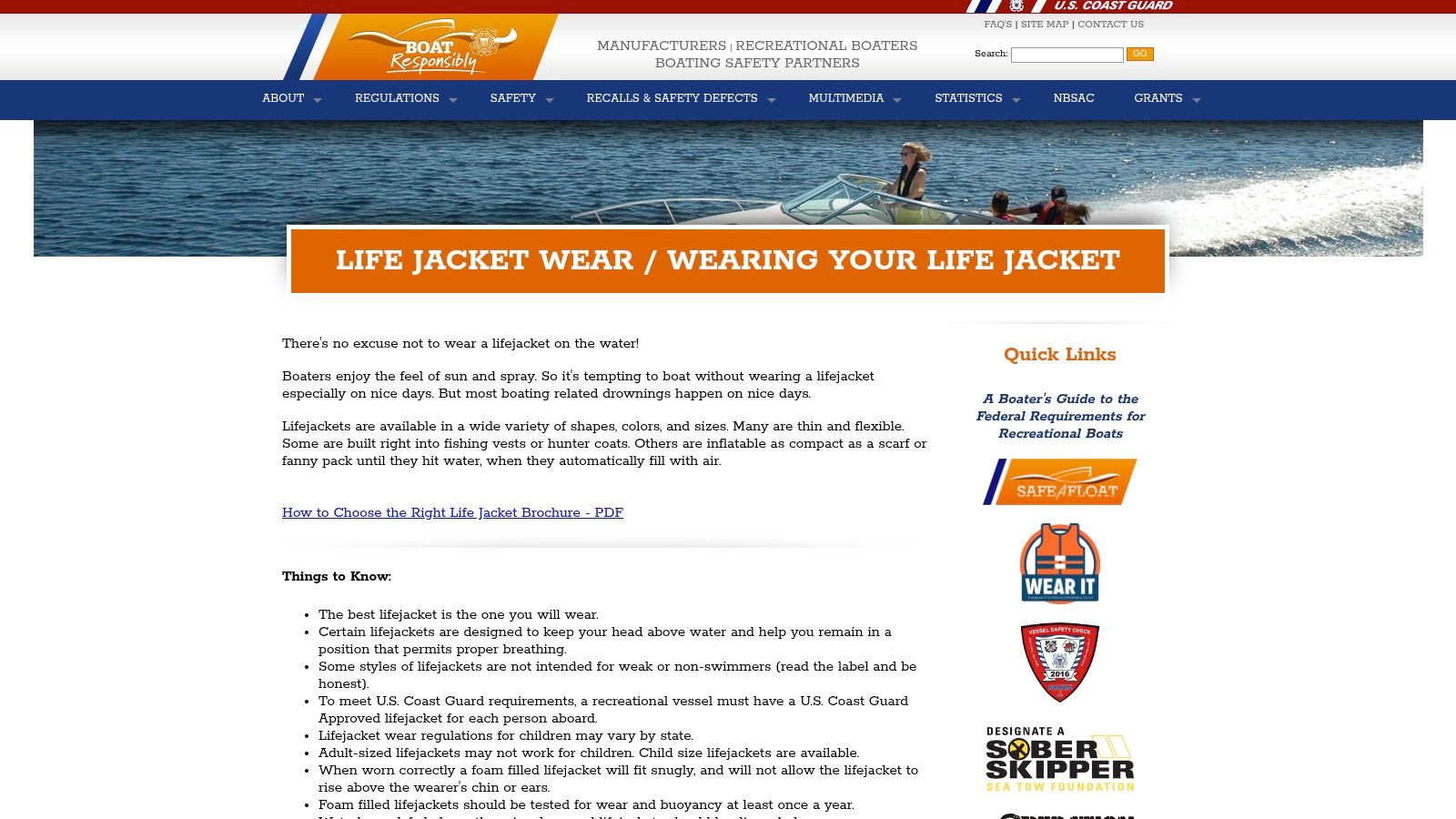
Type IV throwable devices come in various forms, but all share essential features: high-visibility colors (typically orange or red) and grab lines for easier retrieval. Many also incorporate reflective materials for enhanced visibility in low-light conditions. This is crucial for nighttime rescues or during periods of reduced visibility. They are buoyant enough to support an adult in the water and are designed for quick deployment in those critical man-overboard situations.
Pricing: Throwable flotation devices are relatively inexpensive, ranging from $30 to $80 depending on the type and features.
Technical Requirements: The device must be USCG-approved Type IV. Check for the approval stamp on the device. While there are no specific sizing requirements as with wearable PFDs, ensure the device is appropriately sized for the potential users and the vessel's capacity.
Comparison: While a throwable device is crucial, it's not a substitute for a wearable PFD. Wearable PFDs provide better protection, especially for unconscious victims or in rough seas. A throwable device is designed for temporary flotation until a more secure rescue can be effected.
Implementation/Setup Tips:
- Accessibility is Key: Keep the throwable device readily accessible on deck, not stowed away in a locker or compartment. It should be instantly available in an emergency.
- Familiarize Yourself: Practice throwing the device accurately. Understanding its trajectory and how it behaves in the water will be crucial in a real emergency.
- Regular Inspection: Inspect the device regularly for signs of wear and tear, such as fraying ropes or faded colors. Replace it if necessary.
- Consider a Throwing Line: A dedicated throwing line can significantly improve your accuracy and range when deploying the throwable device, especially in challenging conditions.
Pros:
- Quick and easy deployment in man-overboard scenarios.
- No sizing requirements, unlike wearable PFDs.
- Provides temporary flotation until rescue.
- Marks the location of a person in the water.
Cons:
- Less effective than wearable PFDs for unconscious victims.
- Limited effectiveness in rough water or strong currents.
- Requires accurate throwing ability.
- Can be bulky to store on smaller vessels.
Website: More information about boating safety can be found at the United States Coast Guard Boating Safety Resource Center: https://www.uscgboating.org/recreational-boaters/life-jacket-wear-wearing-your-life-jacket.php
A throwable flotation device deserves its place on this list due to its crucial role in immediate man-overboard response. It bridges the gap between the moment someone falls overboard and the completion of a rescue. While it's not a replacement for wearable PFDs, its quick deployability and ability to provide temporary flotation make it an indispensable piece of safety equipment for any vessel subject to the requirement.
8-Point Boating Safety Equipment Comparison
| Product | Core Features ★ | Value Proposition 💰 | Target Audience 👥 | Unique Features ✨ |
|---|---|---|---|---|
| 🏆 CLiX Fueling Solutions | Auto shutoff, spill-free fueling | Prevents overfill & eco-friendly | Recreational & commercial boaters | Smart auto shutoff, USA-made |
| USCG-Approved Personal Flotation Devices (PFDs) | USCG certified, varied sizes | Life-saving, comfort & compliance | Families, recreational boaters | Enhanced comfort, reflective materials |
| Marine Fire Extinguishers | ABC rated, corrosion-resistant | Essential fire safety | Boat owners | Marine-specific design |
| Visual Distress Signals | Day/night signals, reliable | Quick rescue communication | Coastal & inland boaters | Dual signals, waterproof housing |
| Marine VHF Radio | DSC, NOAA alerts, waterproof | Reliable comms & weather updates | Offshore & serious boaters | GPS integration, Channel 16 priority |
| Navigation Lights | LED, auto sensor, regulation compliant | Collision prevention, law compliant | Nighttime boaters | Customizable configs, auto activation |
| Sound-Producing Devices | Audible signals, multiple options | Regulatory, cost-effective safety | All vessel crews | Pattern automation, portability |
| Throwable Flotation Devices | Quick deploy, high visibility | Extra safety layer in MOB | Large vessel crews | Grab lines, high visibility colors |
Smooth Sailing Ahead: Ensuring Safety on the Water
From essential communication tools like marine VHF radios and visual distress signals to life-saving equipment such as PFDs and throwable flotation devices, the tools covered in this article are crucial for safe boating. Remember, having the right equipment isn't enough; it needs to be in good working order and readily accessible in case of an emergency. Choosing the right tools for your specific vessel size and type is paramount. For instance, the required fire extinguisher type and capacity will vary depending on the size of your boat. Similarly, the number of PFDs you need corresponds to the number of passengers you intend to carry. If you're prone to seasickness, choosing the right vessel can make a big difference in your comfort and enjoyment. Check out this guide from Kona Snorkel Trips on the best boat for seasickness for helpful advice. Beyond the minimum requirements, consider additional safety measures based on your boating activities and environment.
By taking the time to properly equip your boat and understand how to use each piece of safety equipment, you're not just meeting regulations, you're investing in peace of mind for yourself, your passengers, and fellow boaters. Responsible boating starts with preparation. Before you cast off, double-check your safety gear and ensure everything is functional and in its proper place.
Streamline your pre-departure checks and enhance your overall boating safety with CLiX Fueling Solutions. CLiX integrates seamlessly with your fueling process, helping prevent spills and ensuring you're ready to embark on your next adventure with confidence. Learn more and explore the benefits of CLiX at CLiX Fueling Solutions.

